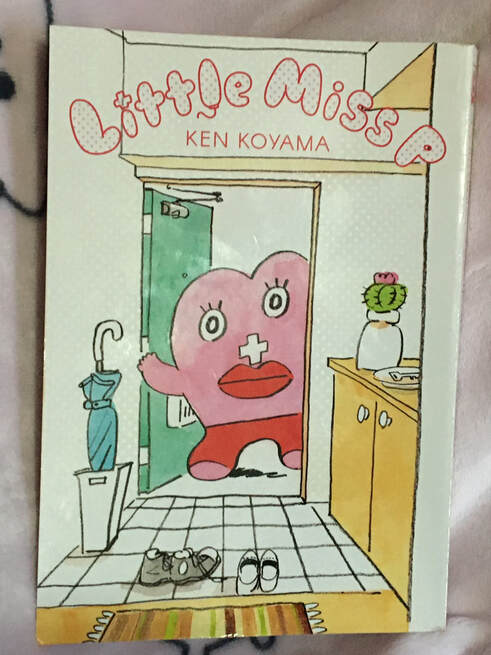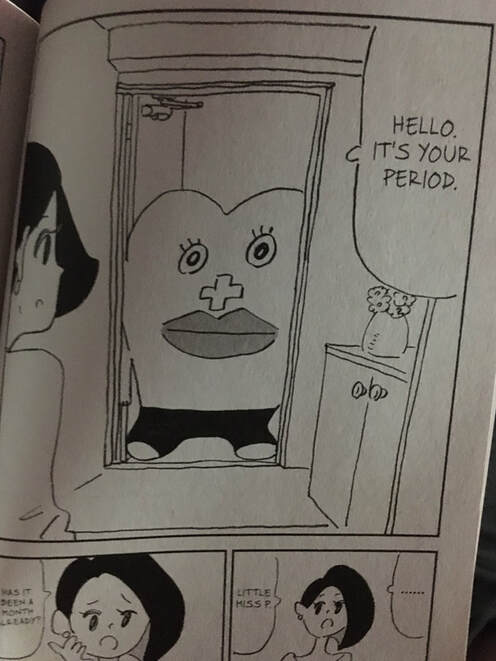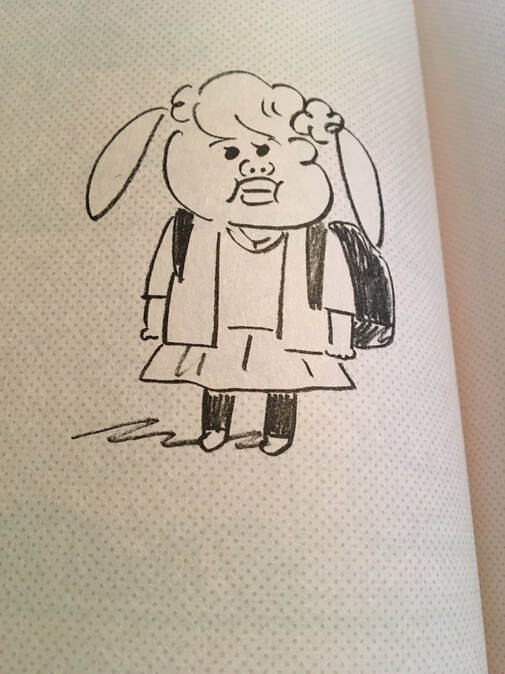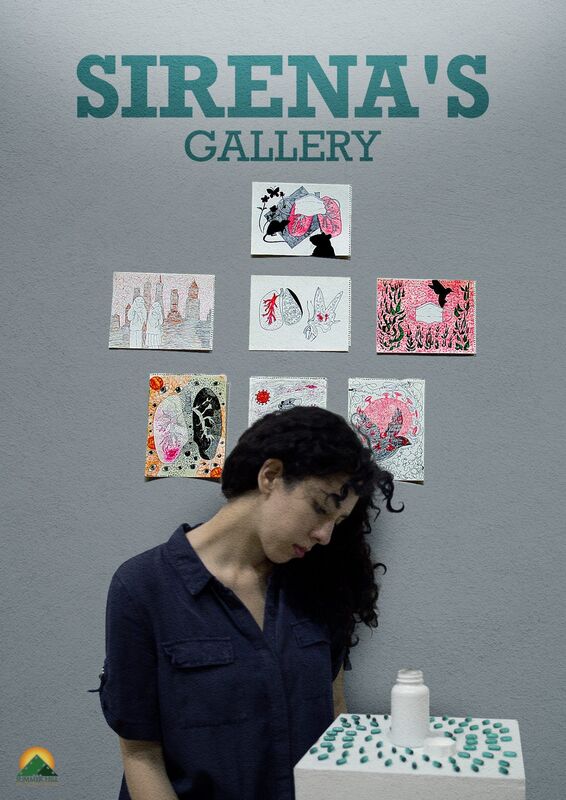|
The Breadcrumbs widget will appear here on the published site.
Period Manga Review: Little Miss P By Ken Koyama is Destigmatizing Menstruation and I’m Here For It1/9/2020 A True Period Piece
By Ghia Vitale
The main character in Little Miss P by Ken Koyama is an anthropomorphized period. This manga is groundbreaking because it illustrates and discusses menstruation when it’s still taboo at large. Warning: Light spoilers ahead!
Recently, I wrote a fart anime review (which is a review of Onara Gorou) and it sparked joy. Afterwards, I found myself wondering, “What’s the next step?” Thanks to Akidearest (a great YouTuber who discusses anime, manga, and otaku culture), I realized what I needed to next: write a period manga review! After all, I’m big on feminism and breaking the stigma that surrounds menstruation. Plus, I'm clearly interested in consuming media that deals with bodily functions. Little did I know, I was about to read one of the best manga books I’ve ever read in my entire life. Little Miss P is the name of the personified period who stars in this manga. In the Japanese version of the manga, her name (and the manga's title) is Seiri-chan, which literally translates to“Menstruation-chan” in Japanese. The manga features Little Miss P visiting various women during their “time of the month” in different contexts. Whenever she stops visiting a woman, it means something important has happened with her body. Little Miss P brings on fatigue, doles out “period punches” (cramps), and draws blood during every visit. Nonetheless, she is still highly invested in the personal issues of the women she visits. With that said, keep in mind that the women she visits are less than thrilled to see her and she still feels this way.
Little Miss P started out as a webcomic in 2017. It’s currently serialized by a manga magazine called Monthly Comic Beam. However, Yen Press released the official English version of this manga. (Fun fact: Yen Press also publishes other great stuff like all four volumes of A Polar Bear In Love by Koromo, a manga series I’ve also fallen in love with thanks to Akidearest.) As of 2019, not only is there a live-action film version of Little Miss P in Japan, but it won the Tezuka Osamu Cultural Prize during the same year. So far, this manga is making a big (red) splash in both Japan and USA.
Little Miss P isn’t the only anthropomorphic character who tags along with people in this manga. Koyama also introduces you to Mr. Libido, Mr. Virginity, and Little Miss PMS. Seeing these characters hang around the humans made me see these bodily functions/concepts a bit differently. For instance, this manga made me perceive my libido as a visitor rather than a feeling/sensation that comes over me. Also, Mr. Virginity is so cute, I’m almost sorry I “lost” him a long time ago. (Still, that doesn’t change the fact that virginity is mostly a social construct, so he’s imaginary to begin with.) The human character I relate to the most in this manga doesn’t come until the end of the book. Her name is Momoko Mogami, a young plus-size woman who’s a writer, but also works at a cafe. She struggles with feeling insecure and loses weight as a result. Sounds predictable, right? Wrong—this weight loss is different because unlike most weight loss portrayals, it’s not framed as a positive thing. The way Koyama draws Momoko blatantly gives this away. This is the only time I’ve ever seen a manga frame weight loss through a negative lens. As a fat girl who’s in recovery for an eating disorder, I really appreciate this kind of representation. I’ve worked hard to embrace self-love and overcome my own insecurities, so I’m glad to see some of my journey reflected in a manga I love.
Speaking of the art style, I appreciate how it’s so simple yet so unique. I’ve never seen anything like the illustrations in this manga. In fact, Little Miss P is so simple to draw, there’s even a section at the end of the book with a drawing song that teaches you how to draw her. I’m so grateful that Ken Koyama dreamed up this universe.
Another great thing at the end of the book: Koyama includes a section about the woman who invented the first pads that Japan ever sold. This chapter explores how Yoshiko Sakai came up with this idea and brought it to life. This is a great chapter if you’re interested in learning a little bit about Japanese history. Paint your whole bookshelf red by checking out Little Miss P. This manga is a very satisfying read and I highly recommend it to anyone who’s curious about it. Do yourself a favor and purchase the manga through the Amazon affiliate link below. You’ll also be doing Quail Bell a favor because we get a percentage of every sale we get through that link. In the meantime, I’ll be hoping/praying for the second volume to come out in English. Thank you for reading from the bottom of my heart. I want the entire world to know about this manga and you reading this review is a step further in that direction.
0 Comments
CommentsYour comment will be posted after it is approved.
Leave a Reply. |
AuthorWrite something about yourself. No need to be fancy, just an overview. Archives
July 2024
Categories
All
|





 RSS Feed
RSS Feed






